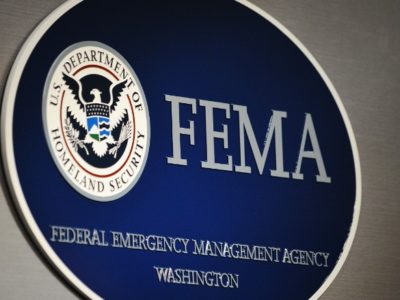Deciding a Climate Case in the Shadow of the Supreme Court
Juliana Judges Surely Had The Higher Court in Mind in Drafting Their Decision

The irony of the Ninth Circuit decision dismissing the Juliana v. United States case this week is plain to see. Two branches of government — the legislative and executive – have failed to act to address an environmental problem that may cause the destruction of the federal government itself. The third branch, the judiciary, recognizes the existential threat but refuses to step in to do anything to stop the destruction. As Judge Staton, who wrote a powerful dissenting opinion in the case stated,
It is as if an asteroid were barreling toward Earth and the government decided to shut down our only defenses. Seeking to quash this suit, the government bluntly insists that it has the absolute and unreviewable power to destroy the Nation.
It is hard to argue with Judge Staton’s logic. The plaintiffs submitted incredibly powerful – and undisputed — evidence that the federal government not only has failed to act to stop climate change but has actively contributed to its causes by subsidizing, licensing, and otherwise promoting the extraction, refinement, transport and use of fossil fuels. The plaintiffs’ lawyers also submitted compelling testimony from the children they represent, who are already experiencing the impacts of climate change firsthand. Those effects will magnify over their lives, threatening their lives, liberty and property, as their constitutional claim argues. If ever a case called out for judicial intervention, this appears to be it.
Robinson Meyer, the excellent Atlantic environmental writer, admits that he ignored the case until he read the powerful Juliana dissent. It changed his mind, according to the headline accompanying his article, or at least moved him to think differently about the case. Meyer’s reaction was hardly unique. Mike Gerrard, the director of the Sabin Center on Climate Change at Columbia Law School, lamented in the New York Times that “for now, all three branches of the federal government are sitting on their hands as the planet burns.” Other lawyers expressed fury that the court had dismissed the case without a trial.
I am deeply sympathetic with these reactions. Like Meyer, I was a convert to the case, but my conversion moment came earlier. My initial and visceral reaction when it was first filed was to ignore the case and assume it would be dismissed in short order. I was wrong. The plaintiffs succeeded in getting first a magistrate and then a district court judge to allow the case to go forward. I began to take notice of the case. I read the lower court decision, read the plaintiffs’ complaint, reviewed the standing declarations of the plaintiffs, read expert declarations and found myself wowed. And compelled. The lawyers had succeeded in making a very persuasive case that the U.S. Constitution should recognize the children’s right to a “climate system capable of sustaining human life.”
And yet. to state the obvious, the case raises constitutional claims that will never be recognized by the Roberts Supreme Court. Chief Justice Roberts has already tipped his hand in issuing a temporary stay in the case, an extraordinary move. Though the stay was subsequently lifted, the Court had already noted in a different order the“striking” breadth of plaintiffs’ claims [that] “present substantial grounds for difference of opinion.” The Court’s order was widely viewed as a not-so-subtle message to the district court judge that she should allow the Ninth Circuit to hear an appeal even before the case had gone to trial. She got the message and did so.
It is in the shadow of this reality that two of the three Ninth Circuit judges hearing the case reluctantly dismissed Juliana. In doing so, the majority expressed strong agreement with the plaintiffs about the nature of climate change, the power of the evidence, and the strength of the plaintiffs’ claims that they had met two of the required three elements to establish standing to sue. The majority nevertheless dismissed the case on the grounds that the plaintiffs had failed to show that a decision in their favor would redress (or “remedy”) their injuries. The court’s principal, and motivating, concern was that the remedy plaintiffs were seeking — an injunction requiring the government not only to cease permitting, authorizing, and subsidizing fossil fuel use, but also to prepare a plan subject to judicial approval to draw down harmful emissions” — was beyond the scope of judicial power to authorize. Essentially, the court said, legislating is not our job:
…it is beyond the power of an Article III court to order, design, supervise, or implement the plaintiffs’ requested remedial plan. As the opinions of their experts make plain, any effective plan would necessarily require a host of complex policy decisions entrusted, for better or worse, to the wisdom and discretion of the executive and legislative branches.
One can easily critique the reasoning of the court, especially because the majority could have held that a narrower remedy — say, just enjoining the government from subsidizing fossil fuels – would at least begin to redress the plaintiffs’ harm without necessarily raising the separation of powers concerns that a broader remedy does (though even such an injunction would embroil the court in complex decisions about what constitutes a subsidy). But here is where the shadow of the Supreme Court looms large. Any decision of the Ninth Circuit in favor of the plaintiffs would have — without question — ended up in front of the Supreme Court. And the plaintiffs would -without question — lose. The only question about the outcome in the Supreme Court would be the grounds for dismissal of the case. And the grounds could be far more damaging to environmental litigants in other cases than the Ninth Circuit decision just issued.
A very real possibility is that the Supreme Court could issue a decision that seriously limits standing doctrine for environmental plaintiffs more generally, or at least for any plaintiffs bringing a case alleging harm from the government’s failure to address climate change. Three of the justices on the Court, including the Chief, would have denied standing to the State of Massachusetts in the landmark Massachusetts v, EPA case holding that the Clean Air Act covers greenhouse gases. The addition of Justices Kavanaugh and Gorsuch as replacements for Justices Scalia and, most importantly, Kennedy, shift the balance of power on the Court to the right. Justice Kennedy was the swing vote in Mass v. EPA. The new configuration raises a very serious possibility that, if given the opportunity, the five conservatives will overturn the standing portion of Mass v. EPA and make standing nearly impossible to achieve in any climate change case. A ruling for the plaintiffs in the Juliana case could provide such an opportunity. The Ninth Circuit knows this.
One can’t read the Ninth Circuit decision without this context in mind. And when read in that context, the decision is, in my view, as much of a victory for the plaintiffs as they could have hoped for. The court, as I said above, recognized the strength of their evidence, the power of their standing evidence, and the wrongness of the government’s inaction. And then the majority dismissed the case anyway, Though the outcome is a sad one, the court decided the case in a way that confines the reach of the case, as much as possible, to the facts in front of it. And it issued a decision that limits – though doesn’t eliminate – the possibility that the Supreme Court could do far more damage to the environment than dismissing the plaintiffs’ claims. The Court could still take the case if plaintiffs — after seeking en banc review — decide to petition the Court to take the case. Such a decision would, in my view, be a bad idea. As regrettable as the Ninth Circuit dismissal is, it was the only way to stop a far worse decision by the high Court.







Reader Comments